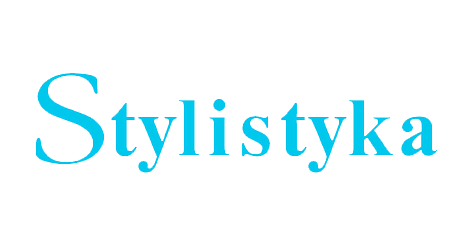Blum J., Bucher H.J., 1998, Die Zeitung. Ein Multimedium. Textdesign – ein Gestaltungskonzept für Text, Bild und Grafik, Konstanz: UVK Verlag.
Google Scholar
Bramann K.-W., Buchmann M., Schikowski M., 2011, Warengruppen im Buchhandel Grundlagen – Allgemeines Sortiment – Fachbuch, Frankfurt a. M.: Bramann Verlag.
Google Scholar
Brinker K., 2005, Linguistische Textanalyse. Eine Einführung in Grundbegriffe und Methoden, Berlin: Erich Schmidt Verlag.
Google Scholar
Brinker K., Cölfen H., Pappert S., 2014, Linguistische Textanalyse. Eine Einführung in Grundbegriffe und Methoden, Berlin: Erich Schmidt Verlag.
Google Scholar
Fritz G., 2013, Dynamische Texttheorie, Gießen, http://geb.uni-giessen.de/geb/volltexte/2013/9243/ (dostęp: 07.09.2022).
Google Scholar
Gössner D., Strohhöfer M., 1989, Leitfaden für die Erstellung von Gebrauchsanweisungen, Nürnberg: Industrie- und Handelskammer.
Google Scholar
Hanus A., Kaczmarek D., 2022, Sekretne życie gatunków. Komunikacja w przestrzeni medialnej – perspektywa germanistyczna, Wrocław: Atut.
Google Scholar
Hasebrink U., Domeyer H., 2010, Zum Wandel von Informationsrepertoires in konvergierenden Medienumgebungen. – Die Mediatisierung des Alltags, red. M. Hartmann, A. Hepp, Wiesbaden: VS Verlag für Sozialwissenschaften, s. 49–64.
DOI: https://doi.org/10.1007/978-3-531-92014-6_4
Google Scholar
Heimerdinger T., 2012, Wem nützen Ratgeber? Zur alltagskulturellen Dimension einer populären Buchgattung. – Non Fiktion. Arsenal der anderen Gattungen: Ratgeber, red. D. Oels, M. Schikowski, U. Schneider, E. Schütz, Hannover: Wehrhahn Verlag, s. 37–48.
Google Scholar
Heinemann W., Viehweger D., 1991, Textlinguistik. Eine Einführung, Tübingen: Walter de Gruyter.
DOI: https://doi.org/10.1515/9783111376387
Google Scholar
Klauke M., 1993, Instruktive Fachtexte des Englischen: Eine linguistische Analyse englischsprachiger Betriebs- und Wartungsanleitungen unter besonderer Berücksichtigung funktionaler und struktureller Aspekte, Frankfurt a. M.: Peter Lang.
Google Scholar
Luginbühl M., 2005, Neue Medien. – Mediensprache. Eine Einführung in Sprache und Kommunikationsformen der Massenmedien, red. H. Burger, Berlin–New York: Peter Lang, s. 425–461.
Google Scholar
Meer D., Pick I., 2019, Einführung in die Angewandte Linguistik, Stuttgart: J.B. Metzler Verlag.
DOI: https://doi.org/10.1007/978-3-476-04856-1
Google Scholar
Mogos A., Trofin C., 2015, YouTube Video Genres. Amateur How-To Videos versus Professional Tutorials, „Acta Universitatis Danubius: Communicatio”, 9(2), s. 38–48.
Google Scholar
Möhn D., 1991, Instruktionstexte – ein Problemfall bei der Textklassifikation, „Germanistische Linguistik”, 106/107, s. 183–212.
Google Scholar
Neckermann N., 2001, Instruktionstexte. Normativ-theoretische Anforderungen und empirische Strukturen am Beispiel des Kommunikationsmittels Telefon im 19. Und 20. Jahrhundert, Berlin: Weissensee-Verlag.
Google Scholar
Ott C., Kiesendahl J., 2019, Ratgeber und RAT GEBEN. – Ratgeberforschung in der Erziehungswissenschaft, red. M. Schmid, U. Sauerbrey, S. Grosskopf, Bad Heilbrunn: Julius Klinkhardt Verlag, s. 65–94.
Google Scholar
Pelka R., 1982, Sprachliche Aspekte von Bedienungsanleitungen technischer Geräte und Maschinen. – Anweisungstexte, red. S. Grosse, W. Mentrup, Tübingen: Gunter Narr Verlag, s. 74–103.
Google Scholar
Richard B., Philippi B., 2016, Tutorials, Let’s plays und Erklärfilme auf YouTube. – Kritische Bildungsforschung. Standortbedingungen und Gegenstandsfelder, red. A. Schippling, C. Grunert, N. Pfaff, Opladen–Berlin: Barbara Budrich Verrlag, s. 180–190.
DOI: https://doi.org/10.2307/j.ctvdf014p.14
Google Scholar
Schmitz U., 2006, Tertiäre Schriftlichkeit. Text-Bild-Beziehungen im World Wide Web. – Von *hdl* bis *cul8r*. Sprache und Kommunikation in den neuen Medien, red. P. Schlobinski, Mannheim: Duden Verlag, s. 89–103.
Google Scholar
Storrer A., 2008, Hypertextlinguistik. – Textlinguistik. 15 Einführungen, red. N. Janich, Tübingen: Gunter Narr Verlag, s. 211–227.
Google Scholar
Szymoniak K., 2008, Między gazetą a Internetem – nowe gatunki dziennikarskie, paragatunki czy hybrydy?, „Język. Komunikacja. Informacja”, 3, s. 121–138.
Google Scholar
Valentin K., 2018, Subjektorientierte Erforschung des Aneignungsverhaltens von Rezipierenden von Video-Tutorials, „Journal für Bildungsforschung Online”, 10(1), s. 52–69.
Google Scholar
Wolf K.D., 2015, Video-Tutorials und Erklärvideos als Gegenstand, Methode und Ziel der Medien- und Filmbildung. – Filmbildung im Wandel, red. A. Hartung, T. Ballhausen, C. Trültzsch-Wijnen, A. Barberi, K. Kaiser-Müller, Wien: new academic press, s. 121–131.
Google Scholar
Wolf K.D., Kratzer V., 2015, Erklärstrukturen in selbsterstellten Erklärvideos von Kindern, „Jahrbuch Medienpädagogik”, 12, Wiesbaden.
DOI: https://doi.org/10.1007/978-3-658-09809-4_3
Google Scholar
Źródła internetowe
Google Scholar
[Duden online], https://www.duden.de/rechtschreibung/Tutorial (dostęp: 07.09.2022).
Google Scholar
https://www.youtube.com/watch?v=An6drnA2-r8 (dostęp: 07.09.2022).
Google Scholar
https://www.youtube.com/watch?v=Jq61NRj8yIY (dostęp: 07.09.2022).
Google Scholar
https://www.bitkom.org/sites/main/files/file/import/BITKOM-Studie-Digitale-Schule-2015. pdf (dostęp: 07.09.2022).
Google Scholar
https://www.mpfs.de/fileadmin/files/Studien/JIM/2016/JIM_Studie_2016. pdf (dostęp: 07.09.2022).
Google Scholar
https://www.mpfs.de/fileadmin/files/Studien/KIM/2020/KIM-Studie2020_WEB_final. pdf (dostęp: 07.09.2022).
Google Scholar


 https://doi.org/10.25167/Stylistyka34.2024.9
https://doi.org/10.25167/Stylistyka34.2024.9
